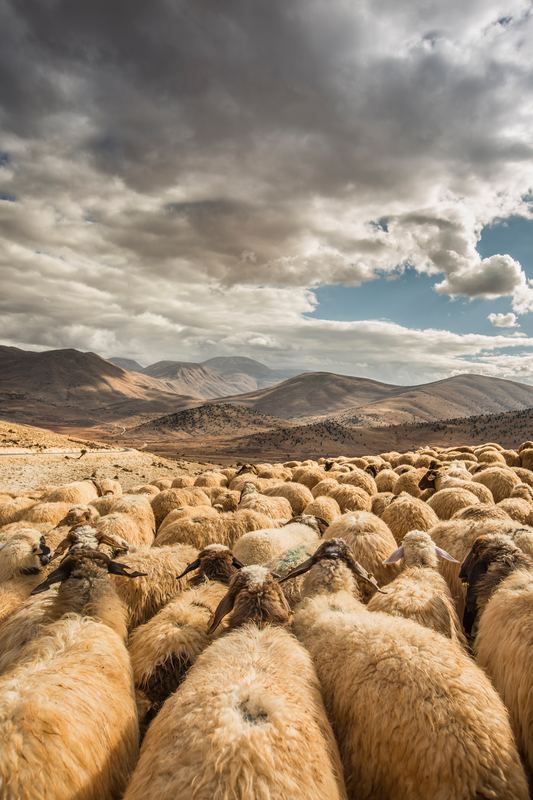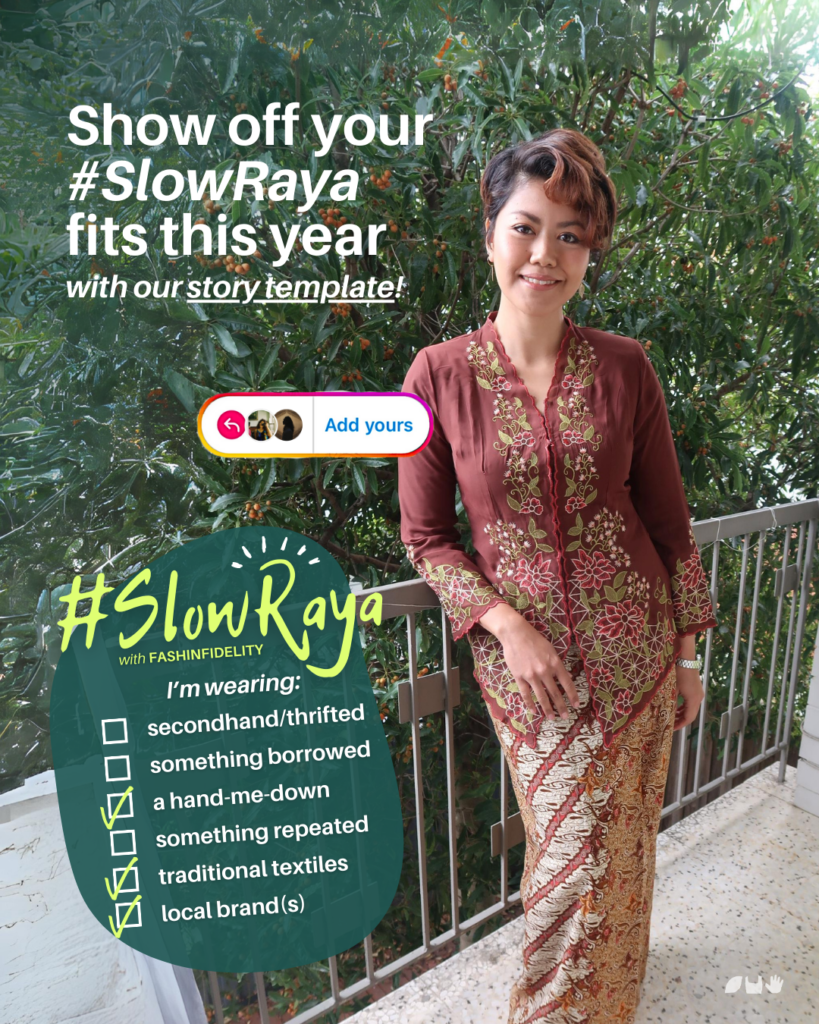On the back of Monday’s ABC news story that Australian goat meat has tripled in value due a global meat shortage, it appears that Aussie farmers have seized this opportunity to get serious in the world trading of Angora goat fleece, or mohair.
In true business panache, the Australian Mohair Company was recently set up to connect farmers and the fashion world, seeing that the questionable ethical ramifications of mulesing (Merino) sheep has been slowly hurting Australian wool producers.
1898 words; 9.5 min read
A bit of a crash course on the demise of Australian wool (pun intended)
Australian Merino wool makes up 50% of all unprocessed wool produced in the country, and supplies 80% of all superfine (20 micron or finer) wool worldwide for apparel. It is an upscale wool product that markets itself as the high-end natural fibre of choice, on par with cashmere. (I shall touch on cashmere in another post.) However, wool production in Australia has been on a decline for the past two decades due to a multitude of reasons, since the collapse of the Reserve Pricing Scheme. The declining outlook on prices have been driven further by seasonally dry conditions, as well as using the sheep stock for meat, depending on market returns. The increased production of synthetic staple fibres such as polyester and viscose, as explained in this
2015 report by NSW Department of Primary Industries, is also a big factor in the decline of wool production in the world wool stage. It is important to mention Merino in mohair’s context, because it wasn’t so long ago wool was one of Australia’s main export earners. Citizens once proudly proclaimed that ‘Australia rode on the sheep’s back.’ The Woolmark was considered a source of great pride, and a Merino ram’s head adorned the shilling coin. But in the period between January 1988 and February 1991 when the industry collapsed, sending woolgrowers bankrupt and putting heavy losses on textile firms overseas, it seems the industry has never recovered from the most harmful effect of all: Australia’s international reputation.






HERMÈS Fall/Winter 2018 Men’s Collection – Paris Fashion Week
The unfortunate green blowfly problem
In the year 2004, the Australian Wool Innovation (AWI), a wool research, development and marketing company, announced that its members would phase out mulesing by 2010. The move was taken after a heavy campaign by PETA (People for the Ethical Treatment of Animals) to boycott Australian wool as they claim the practice is cruel and painful, and that more humane alternatives exist.
However, this target date has passed and till this day there is no clear indication of a renewed due date for the phasing out of mulesing.
Mulesing is the removal of strips of wool-bearing skin from around the breech (buttocks) of a sheep to prevent flystrike, a parasitic infestation of the body of a live mammal by fly larvae (maggots) that grow inside the host while feeding on its tissue, which can ultimately lead to the host’s death, within days, if not controlled and/or treated.
The industry itself has recognised that mulesing is painful for the animal, especially without pain relief or after surgery care. As recent as March 2018, there have been fresh calls from Europe and the USA for Australia to end mulesing as international markets are demanding non-mulesed wool. The buyers urged that Australia risked being left behind in the competition, as wool is no longer a dominant fibre in the textile industry.
Mulesing is prevalent in the Australian wool industry because the sheep stock are mostly highly wrinkled, and the Australian green blowfly can strike stock at any time, not just in the more encouraging conditions of the wetter, moister winter months prior to shearing season.
In the meantime, AWI has decided that (voluntary) application of anesthesia and pain relief while mulesing justifies the continuation of the practice, and is counting on year-on-year breeding research that focuses on flystrike resistance in wool sheep. Read up on AWI’s stance on mulesing on their website.
There are concerns the board members of AWI, the body that represents the wool industry, have conflicts of interests which explain why mulesing has not been phased out in Australia. New Zealand, in contrast, has phased out mulesing altogether.
“…in the period between January 1988 and February 1991 when the industry collapsed, sending woolgrowers bankrupt and putting heavy losses on textile firms overseas, it seems the industry has never recovered from the most harmful effect of all: Australia’s international reputation.”
To clarify, mulesing is only but one of the preventative measures in the fight against flystrike in Australia. Suppliers of non-mulesed wool in Australia and around the world just don’t consider it as a standard husbandry practice. The Victorian Farmers Federation Livestock Group offers a summary of best-practice programs to manage flystrike here. Treatment options for woolgrowers once a blowfly strikes a sheep are also readily and commercially available.
Non-mulesed (Merino) wool exports from Australia has steadily been increasing, and these are normally sourced from ‘plain bodied’ merinos, which is a breed of sheep resulting from the research work conducted by Dr. Jim Watson some 15 years ago, a former CSIRO (Commonwealth Scientific and Industrial Research Organisation) scientist.

Blowflies are the jet fighter planes of the insect world. Photo by James Niland via Flickr.
PETA exposé on animal cruelty in South Africa
The ABC quoted that severe drought in South Africa, the biggest producer of goat products, was to blame on the global goat meat shortage, but could there be another reason this perennial savanna region is not so popular at the moment?
On May 3, news broke of H&M, Zara and other high street labels banning future mohair products after an animal cruelty investigation by PETA showed a film clip, allegedly obtained between January and February this year, of goats crying as they are forcibly shorn before being thrown across the floor by workers, while others have their throats slit or necks snapped by farm staff while fully conscious.
The ban on the Angora goat wool by major high-street retailers highlights how the fashion industry is gradually embracing veganism, and that the ethical relationship between ‘natural’ fabric and food goes hand in hand.
Can goats redeem Australia’s woolly reputation?
It’s the exact relationship that Australia mohair producers are trying to capitalise on.
Mohair is usually the silk-like natural yarn made from the hair of the Angora goat, perhaps one of the oldest textile fibres in use. The Angora goat is thought to originate from the mountains of Tibet, reaching Turkey in the 16th century. The English name of ‘mohair’, adopted sometime before 1570, has Arabic origins.

Mohair wool is used in fabrics such as scarves and clothing, but also to make carpets. Photo by MohairMallet, mohairmallet.com
Australia is one of the key players in the mohair scene, producing 5% mix of the world’s supply, behind South Africa (80%) and USA.
Goats are never mulesed or tail-docked as these practices are not required. Goats do not have a long tail and the density of wool growing fibres is lower than found in Merino breeds. Dr. Bruce McGregor, who has researched wool, mohair and cashmere production for over 30 years, has been quoted as never having any goat suffer from breech strike in his work. In 2008, he suggested that producers who are considering leaving the wool industry given the problems with commodity wool prices and the uproar over mulesing, should consider mohair or cashmere production.
“Goats are never mulesed or tail-docked as these practices are not required.”
Doesn’t sound like a terribly bad idea to me – until now. As outrage over animal cruelty is making more and more waves in the fashion world, as evidenced by Stella McCartney’s ‘Fur-Free-Fur’, the popularity of vegetarian leather, and innovations in ‘breathable’ fabrics, perhaps the industry can, one day, not look to an animal’s skin, coat, or fur as a raw material.
(Interestingly enough however, is the fact that Stella McCartney is opposed to using fur solely because it is supplied by animals farmed and harvested specifically for their coats, but still allows the use of wool and mohair in its range; collectively – ‘natural fibre’ – from select suppliers that meet certain commitments to animal welfare and environmental stewardship.)
As encouraging as the ABC News headline is for upping the ante on the production of Australian mohair and goat meat, the timing in the current climate of fashion may not be so great. Satiating the current meat shortage is nothing more than just practical economics, but I hope producers are treading this new-found success story with caution. Having said that, fashion may well go back to mohair once the industry cleans up itself, and we can still count on this amazing fibre as somewhat ethical yarn until mulesing Merino sheep gets sorted. Afterwards, the two may even go hand-in-hand – not a bad aspiration, in my humble opinion.
The key in the meantime is to be spared another PETA-led investigation – a fatal blow that will never see Australia’s wool reputation ever recover.
What’s ethical is up to you
I’ve always maintained and advocated that every single individual has a multifaceted view of what is ethical and sustainable with regards to their lifestyle choices, hence my belief in the introduction of a consistent, transparent, and easily digestible footprint labeling on clothes. This way, consumers, beyond the aesthetics and price point of a clothing item, can decide which of their own values align with the product’s ‘ingredients,’ to warrant making a purchase.
Wool is one of the most naturally technical materials in the world. It keeps you warm but it also breathes. It has antibacterial properties so it does not require frequent washing. It is naturally water repellent, meaning it doesn’t need to be finished with waterproofing chemicals, is fire resistant and is long-lasting.
“Wool can be judged to have an environmental upper hand over synthetics, as it is not derived from oil, and is therefore renewable. It is ‘biodegradable’, meaning that despite its durability it can return to Earth..”
Wool can be judged to have an environmental upper hand over synthetics, as it is not derived from oil, and is therefore renewable. It is ‘biodegradable’, meaning that despite its durability it can return to Earth (just not via landfills, please.) The sheep in Australia live outside on ‘extensive grassland terrain’, according to the industry, and they are useful for more than one purpose.
Notwithstanding all these ‘green’ credentials, livestock produce a lot of methane through the workings of their stomach, the biggest contributor to human-induced global warming. Plus, we need to feed them, using arable land that could be used for human food, and we use chemicals to transform grease wool into the beautiful silky yarn we recognize when we run our hands through Merino (or mohair), not to mention water and energy consumed in the process.
Does the story above make you favour the synthetic alternatives such as viscose, rayon, and polyester – or even vegetarian leather? Whether or not you are a meat-eater, we must be aware that all fabrics have an environmental impact. The majority of the impact associated with synthetic fibres is due to processing oil into yarn (so, so, many toxic chemicals, water, energy!)
Just a pro tip though: if you are buying wool, there is a way that you can look out for non-mulesed wool. The National Wool Declaration (NWD) is a voluntary scheme that identifies the Australian wool clip to buyers at auction. Here is a quick guide:
- M – mulesed
- PR – mulesed with pain relief
- CM – ceased mulesing status
- NM – non mulesed
- ND – not declared (lazy f**ing buggers!)
There is a third alternative – which is not to buy anything new. Something I’ve done this past 18 months, in support of the circularity movement and my version of sustainable fashion. But again, this option is not for everyone.
What are your thoughts on wool and mohair as a natural fabric and raw material for clothing? I’d love to hear from you.
Join us in our Slow Fashion movement with the hashtag #ConscientiousFashionista and #wardrobetruths on Instagram, and follow us at @fashinfidelity.
Tags:
#mulesing #wool #merino #mohair #sheep #goat #PETA #animalcruelty
#conscientiousfashionista #fastfashion #slowfashion #ethicalfashion #ecofashion #sustainablefashion #greenfashion #sustainability #wardrobetruths #fashioneducation #fashionisnolongertrendy #fashion #wardrobetruths #saynotofastfashion #kualalumpur #australia #malaysia




